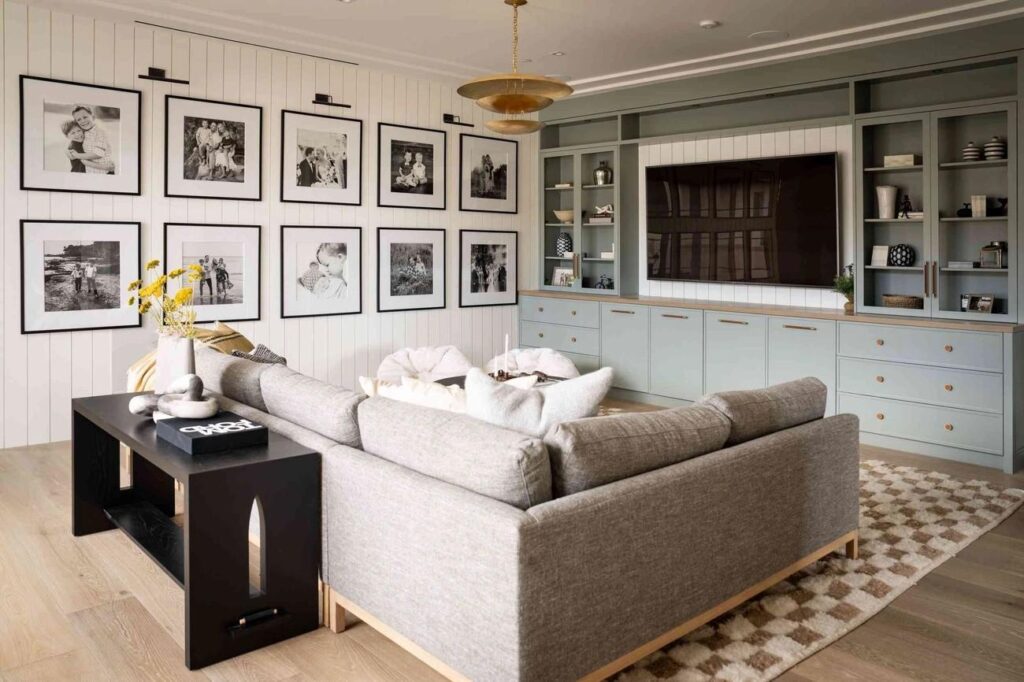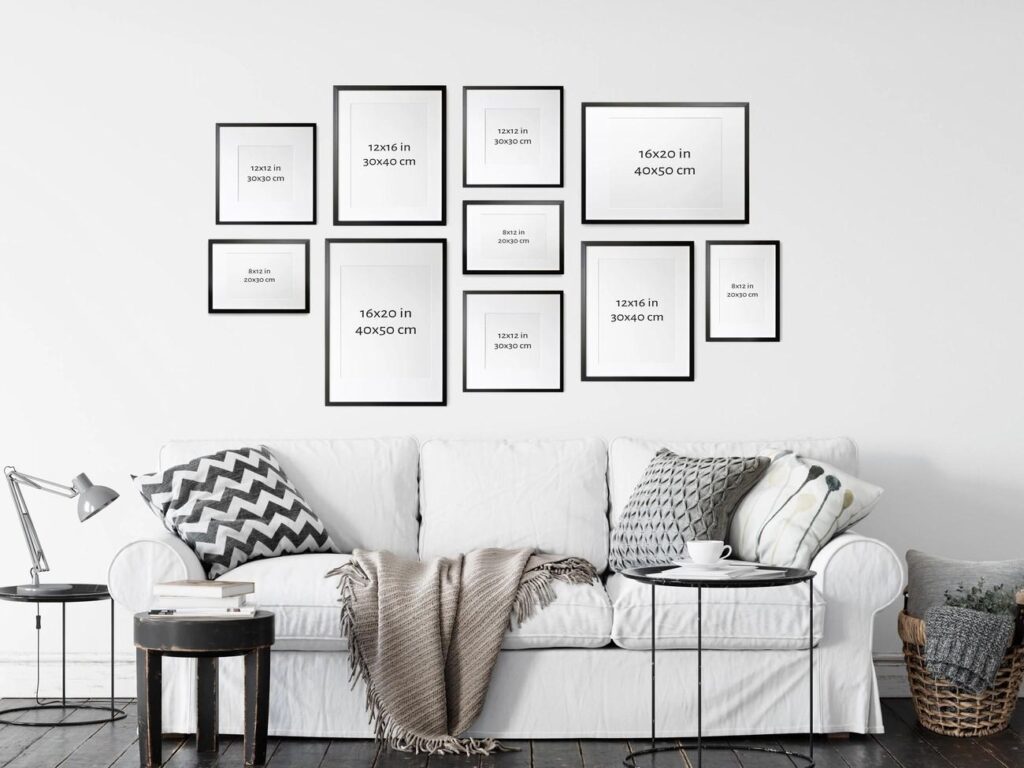Family art can transform ordinary walls into meaningful displays that celebrate memories, connections, and the moments that shape us. These pieces do more than fill space. They create visual stories built around smiles, milestones, and everyday experiences that matter. When thoughtfully arranged, the walls in our home can mirror who we are, the people we love, and the life we build together.
Creating these displays requires a balance of structure and creativity. A well planned photo gallery blends order with personality, and carefully chosen frames can guide the eye and highlight special moments. Adding personal touches to shared spaces such as the dining room brings warmth and a sense of identity that evolves as your family grows.
This guide will help you design art arrangements that connect past and present in beautiful ways. You will discover ideas that range from photo collages to family tree artwork that honors relationships across generations.
Planning Your Family Art Wall
Thoughtful planning marks the first step toward creating meaningful family art displays. A family art wall differs from standard decor because it needs to balance esthetics with personal significance. The planning phase yields better final results, and this approach has struck a chord with many homeowners.
Define your story and theme
Your family art wall should tell a compelling narrative. This opportunity lets you showcase your style while highlighting memorable experiences and family history. The collection should convey a story rather than just randomly assembled photos and artwork.
Some powerful thematic groupings to think over:
- Major milestones and rites of passage
- Travel destinations and adventures
- Family traditions and seasonal celebrations
- Children’s growth and achievements
- Hobbies or activities that define your family
The planning phase flows naturally between reviewing photos and exploring theme possibilities. You should get into how colors blend together and how pieces complement each other to create a cohesive look throughout.
Choose a focal wall or space
The right location becomes vital after you establish your theme. The wall should be among the first visible spots when entering a room for maximum effect. On top of that, walls above sofas, bookshelves, beds, or dining tables provide ideal placement options.
Experts suggest placing the overall composition at 57 inches from the floor. This creates a clean, gallery-adjusted sightline that suits most people’s viewing height. Rooms with high ceilings might need slightly higher placement, but a single anchor piece should guide the viewer’s focus.
Your focal point should feature a “hero” piece—a larger family portrait or favorite travel photo works well—with other elements arranged around it for balance and visual flow. This anchor creates stability and serves as a starting point for additional elements.
Note that you’ll see your gallery wall every day. The pieces should hold genuine personal meaning. A more personal touch ensures you’ll appreciate the display for years ahead.
Creative Family Art Formats to Consider

Image Source: The Spruce
Your next exciting step in telling your family’s story is choosing different artistic formats after picking the perfect wall space. Each format gives you special ways to preserve memories and create visual appeal.
Framed photo collages
Timeless displays emerge from framed family photos that offer countless creative options. You can start with a casual, growing gallery using different colored frames that expand over time. A clean, sophisticated look comes from matching frames with black-and-white photos on white walls. Your arrangement will flow naturally when you align frames with architectural features like stairways.
Your story becomes more personal when you add meaningful items beyond photos. A special Polaroid snapshot, your child’s artwork, or those cocktail napkins from an important celebration bring authentic character to the display.
Canvas and metal prints
Canvas and metal prints serve as dramatic statement pieces that offer modern alternatives to regular frames. Metal prints shine with remarkable vibrancy through dye sublimation directly on aluminum. These prints show deeper blacks and brighter whites. They work great in busy areas because they resist water, scratches, and fading even in direct sunlight.
Canvas prints add a traditional artistic touch that works best with warmer colors and softer images. Family portraits gain extra dimension from the textured surface that blends well with classic décor. Families who enjoy art that feels more refined may also explore the impact of a real landscape painting, which brings depth, richness, and a timeless presence to a feature wall.
Custom family tree artwork
Your heritage comes alive through personalized family trees that turn genealogy into art. These visual pieces honor both ancestors and descendants while sparking conversations. You’ll find options from elegant pedigree charts to artistic interpretations with watercolors or custom paintings.
Archival-quality posters ready for framing can be created through online services where you upload family data, including GEDCOM files. Unique heirlooms emerge when you commission handcrafted pieces that showcase your family’s cultural heritage or special symbols.
Mixed media: maps, letters, recipes
Simple mementos become extraordinary art pieces with creative presentation. Kitchen displays gain meaning from framed handwritten recipes passed down through generations. One designer created lasting memories by scanning her grandmother’s recipes onto fabric-covered canvas, saving precious handwriting from fading away.
Maps tell your family’s geographical story across generations while creating striking wall art. They work best when showing places that matter – like hometowns, honeymoon spots, or ancestral lands. Their detailed lines and often single-color schemes add visual interest to any space.
Layout and Arrangement Techniques

Image Source: Natasha Riha Photography
How you arrange your family art can completely change the way your walls look and feel. With a few thoughtful techniques, even a random collection of pieces can become a display that feels intentional and meaningful. Consider the following ideas while planning your layout:
- Symmetry or natural flow
Symmetrical arrangements suit traditional spaces and create a clean, structured appearance. Grids with matching frames placed at equal distances offer a polished look. Organic layouts allow for more creativity. A modern gallery wall can begin with one striking piece placed slightly off center, with smaller items flowing outward to form a relaxed and visually engaging arrangement. - Balancing different sizes
Hang your largest piece at eye level, which is usually around fifty seven inches from the floor. This becomes your main anchor. Surround it with medium sized pieces and use smaller items to fill remaining gaps. The spacing between frames is important. Two to three inches brings everything together, while four to six inches creates a more open feel. - Planning with templates
Paper templates that match your frame sizes help you experiment without making unnecessary holes. You can test different arrangements on the floor or tape the templates to the wall. Many designers begin at the center and work outward, which helps keep the display balanced and visually pleasing. - Using lighting and furniture effectively
Your gallery should span about two thirds to three fourths of the width of the furniture beneath it. Proper lighting brings your display to life. Picture lights, track lighting, wall sconces, or battery powered art lights can highlight key pieces and add depth. Good lighting makes your family art more visible and helps create a warm, welcoming atmosphere.
Making It Personal and Evolving Over Time

Image Source: Jessica Brigham
Family art displays are magical because they grow and change among your household. Unlike museum exhibitions, your walls can become living albums that tell your family’s story.
Include children’s artwork or crafts
Your kids’ creations deserve more than temporary space on the refrigerator. Set up a weekly featured gallery where new artwork rotates so each piece can shine for a moment before you decide what to keep. You can group smaller items on poster board to create a cleaner look. Hand painted letters, finger paintings, and simple craft projects can blend beautifully with professional prints to add personality and charm.
If your family enjoys guided creative activities, you can explore paint kits from Number Artist and see the full selection, which makes it easy for children to create pieces that fit naturally into a family art wall.
Use interactive elements like clipboards
Clipboards are a great solution when you want to change displays often. Paint them to match your décor – black paint works great, and chalkboard paint adds extra functionality. You can hang them in a grid pattern with poster strips or nails, which makes artwork rotation quick and easy. This setup lets your children update their displayed creations on their own and promotes pride in their artistic growth.
Rotate pieces to keep it fresh
Your family art wall should feel like a seasonal experience:
- Swap pieces quarterly to show seasonal colors and themes
- Mix family photos with artwork to add visual variety
- Add a pinboard background that makes updates easy
Your family art wall should feel alive and dynamic. As interior designer Lauren Robbins notes, “Everything in a home should have meaning”. The changing nature of your displays will give a meaningful reflection of your family’s ongoing story.
A Moment to Reflect on Your Family’s Story
Creating a family art wall is more than a design project. It is a chance to honor the people, memories, and experiences that shape your home. Each choice you make, from selecting the first photo to adjusting the final frame, adds depth to a story that continues to grow with time.
As you explore formats, layouts, and meaningful personal touches, you build a space that feels welcoming and true to your family’s identity. The process encourages you to look closely at what you cherish and to give those moments a place of importance within your home. A thoughtful arrangement not only elevates your décor but also creates an environment filled with warmth and intention.
Your walls can hold more than beautiful images. They can hold the heart of your family’s journey. With care and creativity, each piece becomes part of a living narrative that continues to evolve, offering comfort, inspiration, and connection every time you pass through the room.


